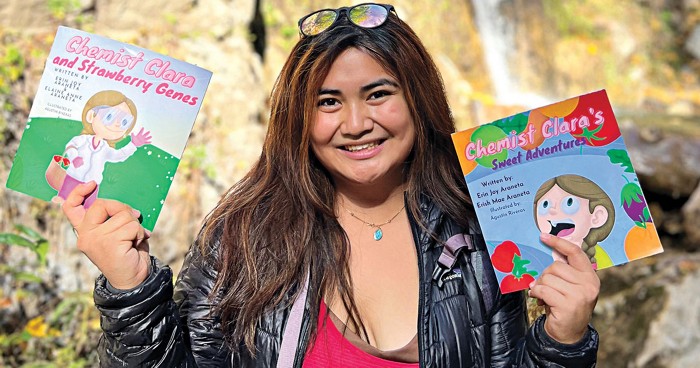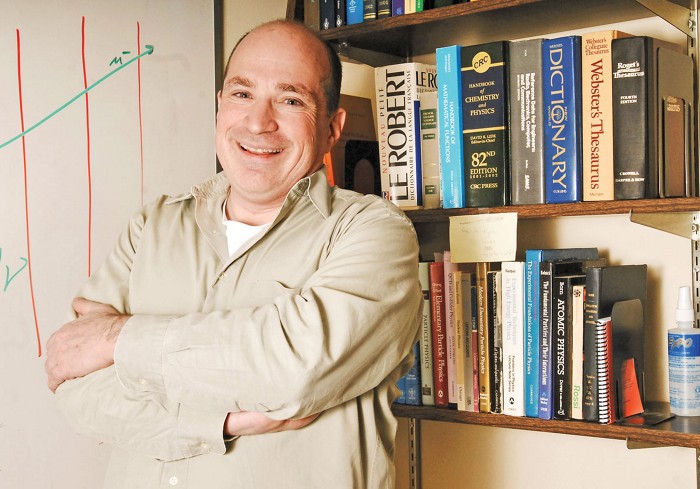Advertisement
Grab your lab coat. Let's get started
Welcome!
Welcome!
Create an account below to get 6 C&EN articles per month, receive newsletters and more - all free.
It seems this is your first time logging in online. Please enter the following information to continue.
As an ACS member you automatically get access to this site. All we need is few more details to create your reading experience.
Not you? Sign in with a different account.
Not you? Sign in with a different account.
ERROR 1
ERROR 1
ERROR 2
ERROR 2
ERROR 2
ERROR 2
ERROR 2
Password and Confirm password must match.
If you have an ACS member number, please enter it here so we can link this account to your membership. (optional)
ERROR 2
ACS values your privacy. By submitting your information, you are gaining access to C&EN and subscribing to our weekly newsletter. We use the information you provide to make your reading experience better, and we will never sell your data to third party members.
Science Communication
Newscripts
BSology and science NFTs
by Marsha-Ann Watson
July 10, 2021
| A version of this story appeared in
Volume 99, Issue 25

The science of BS
If you’ve ever played the card game “Cheat” or “I doubt it,” you’ve participated in the glorious tradition of bulls---, or BS, as the game is also called. Though occasionally a fun game, BS, it turns out, is also an important part of human communication (Evol. Psychol. 2021, DOI: 10.1177/14747049211000317).
As a technical term, BS is defined as nonsense speech of questionable veracity that is intended to mislead. According to a team led by psychology graduate students Martin Harry Turpin of the University of Waterloo and Mane Kara-Yakoubian of Ryerson University, the ability to effectively produce BS “may serve to assist individuals in negotiating their social world.” The researchers also note that the successful production of verbiage akin to bovine feces is a strategy for impressing others and signaling one’s own intelligence. Though it’s worth noting that having an inability to BS does not necessarily mean that one is unintelligent—quite a relief for those better skilled in tactical honesty.
But how does the ability to make stuff up on the fly aid human communication?
It’s all about signals.
An honest signal, like the bright coloration of a poisonous frog that communicates danger, is plain truth, the researchers explain. A dishonest signal, such as a harmless frog having similar coloration to a more dangerous one, says, “Don’t eat me, even though I’m secretly tasty.” In the latter case, the signal is dishonest but effective. Essentially, when your success or failure depends more on how others see you than on your own spectacular—or pathetic—innate abilities, being able to BS with style is an evolutionary competitive advantage.
But don’t confuse BS with outright lies. Liars know the truth and deliberately express falsehoods. A master of BS, on the other hand, “is faking things. But this does not mean that he necessarily gets them wrong,” writes Harry Frankfurt in his much-cited 1986 essay “On Bullshit.” Unlike liars, BSers are concerned with impressing others; they are not concerned with truth or falsity.
Though deception and bravado may be good strategies for evolutionary triumph over one’s peers, deceiving oneself is another form of the art that grants the practitioner greater self-confidence. But André Spicer, a professor of organizational behavior at the University of London, warns that overuse of BS can misfire and undermine trust with others when discovered. It can also lead to self-delusion when successful (Organization Theory 2020, DOI:10.1177/2631787720929704).
The NFTs of science

Depending on your perspective, the recent hubbub over nonfungible tokens, or NFTs, may seem like a whole lot of BS. It’s hard to imagine pixelated memecats and icons as valuable, but these blockchain-encoded digital art items, which go beyond cutesy icons to more complex art, can sell for millions and are a new way to document true ownership of digital data. The tokens are encrypted with blockchain, a computer-based record of an item, and cannot be transferred until officially sold.
Scientists are not about to be left out of the NFT craze: the University of California, Berkeley, auctioned off a bit of science as art last month. An NFT titled “The Fourth Pillar”—a 10-page document that shows immunologist James P. Allison’s Nobel Prize–winning work to develop a cancer treatment using the body’s immune system—netted the university about $43,000. The NFT was bought by @FiatLuxDAO, a decentralized autonomous organization, or DAO, formed by Berkeley alumni who combined their funds for the purchase. Another science-based NFT that will go up for auction at a later date includes a disclosure form describing CRISPR-Cas9, a gene-editing platform developed in part by chemistry Nobel laureate and Berkeley professor Jennifer A. Doudna.
Proceeds from the auctions will support research at the university.
Please send comments and suggestions to newscripts@acs.org.





Join the conversation
Contact the reporter
Submit a Letter to the Editor for publication
Engage with us on Twitter